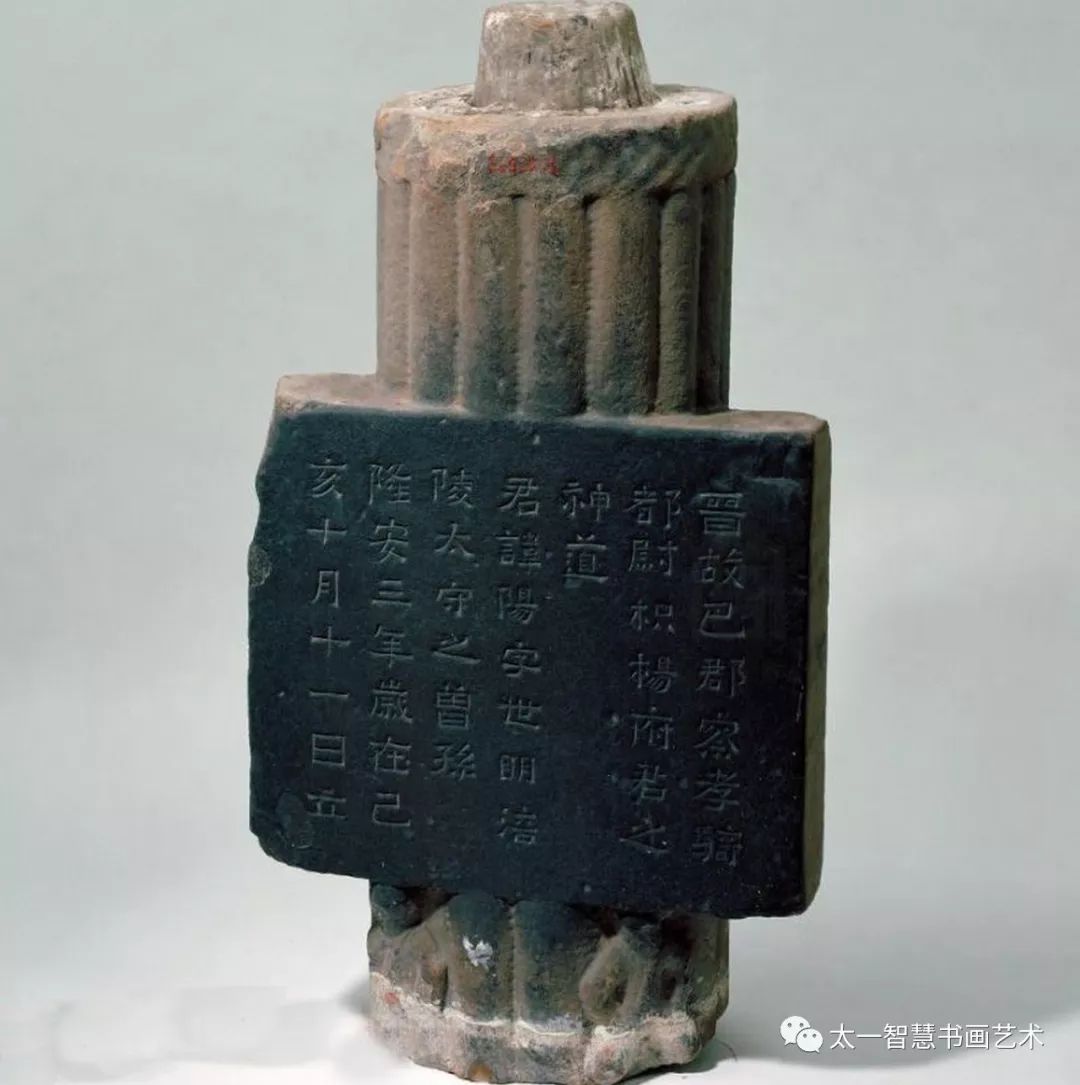In the ancient Eastern Jin Dynasty, people often used A stele was placed in the ancestral hall and the mausoleum. At that time, the stele was called the Shinto pillar. It was composed of three parts, the hat, the body and the seat. There are pattern carvings on the cap, characters are engraved on the body, and the seat is the part buried in the soil (Figure 1).

(Figure 1)
The third year of Long'an in the Eastern Jin Dynasty (399) "Yang Fujun Shendao Pillar" is a very complete tombstone, with 7 lines and 43 characters on it, written in official script Body, now stored in the Palace Museum in Beijing.
(Figure 2)
Calligraphy kept changing with the development of Chinese culture. At that time, the Eastern Han Dynasty had perished, but the font of Lishu was still in use. From the monument, this kind of Lishu It is no longer the standard official script of the past, but a transitional script with obvious signs of regularization, which is close to the "Er Cuan" font more than a hundred years later.
This kind of calligraphy is simple and childish, full of natural meaning, and gives people a sense of honesty and mellow intimacy. In calligraphy creation, if you borrow the characteristics of its characters and use the brushwork of seal script, you can also write a very meaningful calligraphy work.
After reading this style of writing, how do you feel?
Articles are uploaded by users and are for non-commercial browsing only. Posted by: Lomu, please indicate the source: https://www.daogebangong.com/en/articles/detail/There%20are%2043%20official%20script%20characters%20engraved%20on%20this%20stele%20simple%20and%20childish%20honest%20and%20mellow%20which%20brings%20inspiration%20to%20creation.html

 支付宝扫一扫
支付宝扫一扫 
评论列表(196条)
测试